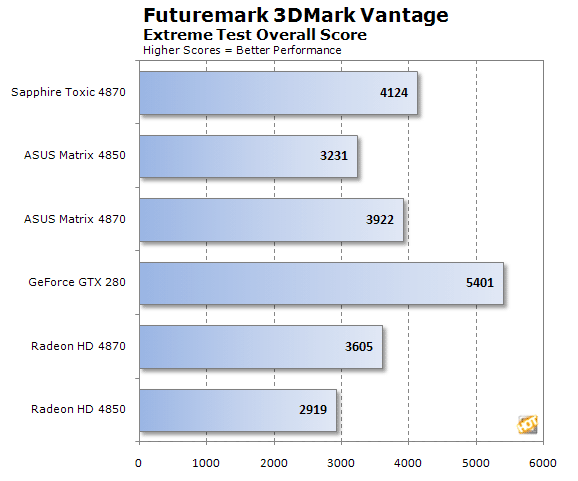ASUS Matrix & Sapphire Toxic Radeon HD 4870, 4850
|
|
|
|
|
The latest version of Futuremark's synthetic 3D gaming benchmark, 3DMark Vantage, is specifically bound to Windows Vista-based systems because it uses some advanced visual technologies that are only available with DirectX 10, which y isn't available on previous versions of Windows. 3DMark Vantage isn't simply a port of 3DMark06 to DirectX 10 though. With this latest version of the benchmark, Futuremark has incorporated two new graphics tests, two new CPU tests, several new feature tests, in addition to support for the latest PC hardware. We tested the graphics cards here with 3DMark Vantage's Extreme preset option, which uses a resolution of 1,920x1,200, with 4x anti-aliasing an 16x anisotropic filtering. |

The 3DMark Vantage Extreme test tells a similar story to the 3DMark06 test, although the GeForce seems to have gained a much larger advantage. The ASUS Matrix 4850 performs a bit better than the reference card thanks to the slight boost provided by iTracker. The Matrix and Toxic cards also beat the reference model by an even larger margin. The Toxic's higher overclock gives it the advantage.








